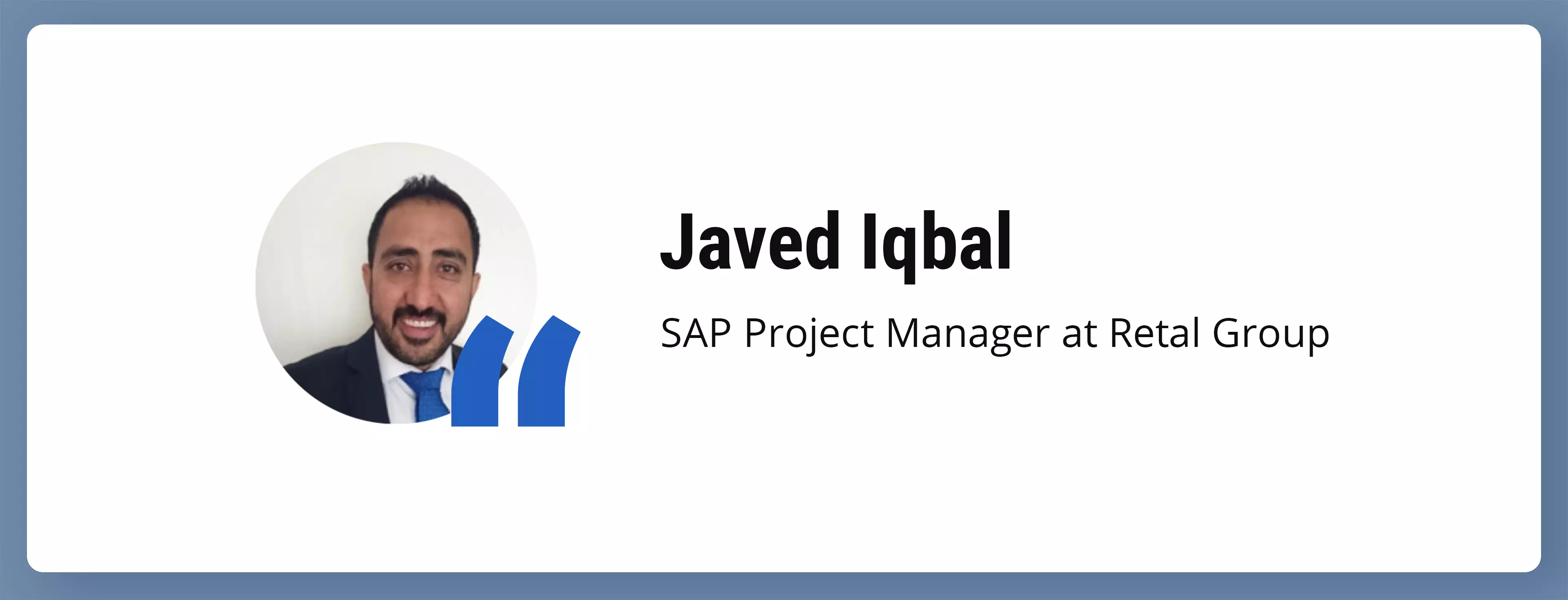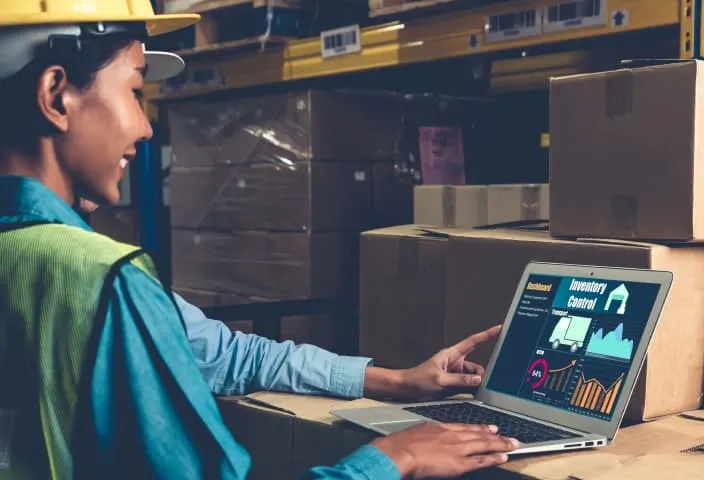On May 10-12, LeverX will join the SAP Sapphire event in Orlando as a Gold Sponsor and share its experience in SAP S/4HANA implementation based on the success story of Retal Group.
’’The LeverX Team Sees the Bigger Picture, not Just Short-Term Plans’’: Interview with Javed Iqbal from Retal Group
On May 10-12, LeverX will join the SAP Sapphire event in Orlando as a Gold Sponsor and share its experience in SAP S/4HANA implementation based on the success story of Retal Group.
In anticipation of this event, we interviewed Javed Iqbal, SAP Project Manager at Retal Group, to learn more about the project challenges, results, and plans.

— Javed, let us speak about the project scope. What was your company’s focus?
— We needed to optimize the supply chain, procurement, and finance processes. Initially, we didn't have any CRM-related plans, but now there are more and more sales-related queries from our business managers. So we've enhanced many of our sales processes, such as invoice automatic sending.
Still, our primary focus area was planning optimization, including Production Planning and Detailed Scheduling (PP/DS). Though the transformation started in the Finance department, which was the main driver for this change, there's a growing interest in sales, planning, and procurement divisions. The PP/DS solution implementation was not initially requested, but after an excellent onboarding, Retal understood the functionality of SAP PP/DS and its benefits. Now we are using it in many activities.
— When did you decide to add the PP/DS solution? How long did it take to go the project live?
— If we talk about specific timelines, the Greenfield implementation for PPDS took about six months. It was based on the SAP Activate methodology that accelerated the project delivery.
It included five phases, and during the Explore phase, the LeverX team defined the need for an additional product: we had a lot of requirements for the functionality, which was impossible to cover with the standard SAP PP solution. Thus, we added SAP PP/DS to the project scope. I believe it was pretty challenging to have such a difficult functionality at the realization phase, but we did it.
— Did you face any obstacles while implementing your project?
— I think the biggest obstacle was COVID-19. I needed your team to be here on-site, but they could not do that because of lockdown restrictions.
— And how did you address this challenge?
— We had to overcome that obstacle: the longer I was on-site, the better I understood what the business needed.
For example, there were many different databases with Excel spreadsheets. It would be quite challenging even to extract and transfer the data fast. So our team had to learn a lot during the project, and the LeverX team supported us with this task.
In this project, the ETL started with the extraction part. As far as transformation is concerned, you can use any SAP service, such as data cleansing, or you can do it internally. We chose the second option because our data structures are unexplainable, and we wouldn't have done the extraction with an SAP solution. Thus, the data extraction was done internally while the LeverX team assisted us with the data load.
— According to your corporate website, you have big plans for the transformation program. Where have you already implemented this plan, and what are your plans for the nearest future?
— The project is currently being implemented at Retal Lithuania. We have another plant in Klaipėda, Lithuania, but we haven't implemented SAP yet. The next rollout is planned in the Czech Republic and other European countries. Finally, we will implement SAP in the USA or another plant in Lithuania because it has different product lines. All in all, we have 11 plants in the pipeline.
— How do you think the SAP solutions helped your company to be a more sustainably focused business?
— I think that we improve not only the quality but also the environmental and safety issues. With the reports provided by SAP, we have better visibility into such things.
Since more reports are available for the business, we can use more recycled materials. Better planning processes allow us to use even more such materials instead of pre-manufactured raw materials.
— It was a great idea to create the center of expertise. Why did you decide to launch it?
— On the one hand, if you don't have a dedicated team, your end-users or business users are not always available. They are not going into all these technical things where they can bridge the gap between the technology and the business processes. On the other hand, similar to our collaboration with LeverX during the COVID-19 lockdown, someone has to bridge this gap between these people because even if they are experienced specialists, they need to understand the business side.
Of course, if you have never seen a production machine running, it's pretty hard to conceive what process you need to build. The center of excellence, which is our dedicated team, can bridge this gap. Currently, we have 11 people in our center of excellence.
— How would you describe your collaboration with LeverX?
— I have worked with many Western companies previously. LeverX team has the diverse industry experience and in-depth knowledge.
I have noticed with LeverX that the team is quite engaging and cooperative, quite understandable. I felt that there was quite a personal touch to professional activities. They see the bigger picture, not just a short-term thing, and that I liked.
Your team can communicate with people speaking different languages and communicate very effectively. Those skills helped us communicate during COVID-19 travel restrictions.
How useful was this article?
Thanks for your feedback!

-min-Jul-12-2022-02-37-35-21-PM.jpg)
.jpg)
